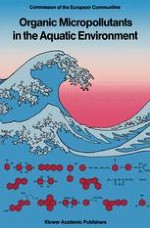1988 | Book
Organic Micropollutants in the Aquatic Environment
Proceedings of the Fifth European Symposium, Held in Rome, Italy, October 20–22, 1987
Editors: G. Angeletti, A. Bjørseth
Publisher: Springer Netherlands
Included in: Professional Book Archive
